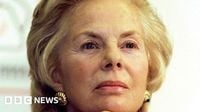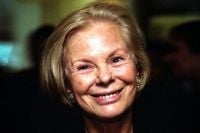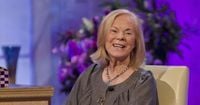On September 4, 2025, the United Kingdom lost one of its most quietly influential royals: Katharine, Duchess of Kent. She died peacefully at Kensington Palace, surrounded by her family, at the age of 92, as confirmed by Buckingham Palace. The announcement, made late on Thursday, set in motion a series of ceremonial and deeply personal events that will culminate in a historic royal funeral on September 16.
In a break from centuries of tradition, Katharine’s funeral will be held at Westminster Cathedral—the first Catholic funeral for a royal in modern British history, according to the BBC. The service, scheduled for 2pm, will be attended by King Charles and Queen Camilla, along with many senior royals and members of the Duchess’s family. Buckingham Palace stated, "The King and Queen and all members of The Royal Family join The Duke of Kent, his children and grandchildren in mourning their loss and remembering fondly The Duchess's life-long devotion to all the organisations with which she was associated, her passion for music and her empathy for young people."
Preparations for the funeral are steeped in both royal protocol and Catholic tradition. The Duchess’s coffin will rest in the private chapel at Kensington Palace until the evening of September 15. There, close family will gather for the Rite of Reception—a service that typically includes the sprinkling of holy water and prayers known as Vespers, led by Bishop James Curry, Auxiliary Bishop of Westminster. The coffin will then be transported by hearse to Westminster Cathedral, where it will remain overnight in the Lady Chapel, a place of quiet reflection and prayer before the main funeral mass.
Cardinal Vincent Nichols, the Cardinal Archbishop of Westminster, will preside over the Requiem Mass, with the Anglican Dean of Windsor participating—a symbol of unity between the Catholic and Anglican branches of the royal family. After the service, the Duchess’s coffin will be taken by hearse to the Royal Burial Ground at Frogmore, Windsor, where she will be laid to rest. Flags will fly at half-mast at all official royal residences, and those in royal livery, the Royal Mews, and troops on public duties will wear black armbands as a mark of respect. The period of royal mourning, as approved by King Charles, will continue until the funeral concludes.
Katharine, born Katharine Worsley, became the Duchess of Kent in 1961 when she married Prince Edward, Duke of Kent, a cousin of the late Queen Elizabeth II. Their marriage at York Minster was a grand affair, but Katharine’s life would take a notably unconventional royal path. In 1994, she converted to Catholicism, becoming the first member of the royal family to do so in more than 300 years. Her faith was deeply personal, and it was her wish to have her funeral at Westminster Cathedral—making this not only a family event but a moment of historic significance for the monarchy and the nation.
But Katharine’s legacy stretches far beyond the rituals of royalty. Known for her love of music, she was a skilled pianist, organist, and singer. For 13 years, she taught music at a primary school in Hull, where, as reported by BBC, her students knew her simply as "Mrs Kent," unaware of her royal status. Her devotion to music charities, as well as organizations like Childline and the Passage (which supports homeless people), reflected her empathy and commitment to helping others. Prime Minister Sir Keir Starmer remarked that the Duchess brought "compassion, dignity and a human touch to everything she did."
In the world of sports, especially tennis, Katharine was a familiar and beloved figure. Her appearances at Wimbledon, where she presented trophies and comforted players, became a cherished tradition. One of the most memorable moments came in 1993, when she consoled a tearful Jana Novotna after a heartbreaking loss in the ladies’ singles final—a gesture that captured her warmth and ability to connect with people. Tennis legend Martina Navratilova paid tribute, saying it was "amazing how many millions of people around the globe she affected in a positive way."
The Duchess’s relationship with the public was not without its challenges. Her later years saw her step back from royal duties and relinquish the style "Her Royal Highness," preferring the simple title of Mrs Kent. Despite this, she remained involved in causes close to her heart and continued to support her family, including her three children: George, Earl of St Andrews, Lady Helen Windsor, and Lord Nicholas Windsor.
The timing of the funeral adds an unexpected layer of complexity, as it coincides with former U.S. President Donald Trump’s state visit to the U.K. later in September. While the royal family’s focus will be on mourning and remembrance, the eyes of the world will also be on London, watching how tradition and modernity intersect in this unique moment.
As the nation prepares to say farewell, royal residences across the country will display the Union Flag at half-mast, and the public is expected to pay their respects in various ways. The official framed announcement of the Duchess’s death was posted on the railings of Buckingham Palace, and the royal family’s social media channels have been flooded with messages of condolence and memories from those whose lives she touched.
In an era when the monarchy is often scrutinized for its adherence to tradition, the Duchess of Kent’s funeral stands as a testament to both change and continuity. Her decision to convert to Catholicism and request a Catholic funeral at Westminster Cathedral is a powerful reminder of the evolving nature of the royal family and its place in British society. At the same time, the presence of the King, Queen, and senior royals, the careful observance of mourning rituals, and the solemnity of the Requiem Mass underscore the enduring respect for history and ceremony.
Katharine, Duchess of Kent, will be remembered not just for her titles or her role in the royal lineage, but for her quiet acts of kindness, her love of music, and her unwavering commitment to helping others. As her coffin journeys from Kensington Palace to Westminster Cathedral and finally to her resting place at Frogmore, the nation bids farewell to a royal whose legacy is defined by compassion, humility, and a gentle breaking of tradition.






